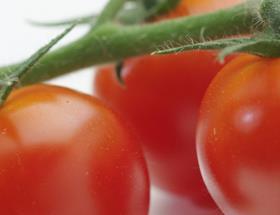
Tomatoes that are bred for higher yields have less resistance to pests and predators, a new study has found.
Researchers at Newcastle University said that, through breeding for larger, redder tomatoes with longer shelf-life, modern tomato varieties have fewer characteristics that defend against pests.
In contrast, wild tomatoes have a dual line of defence against pests, including an initial mechanism that discourages whitefly from settling on the plant in the first place, followed by a chemical reaction that helps block the whitefly’s feeding tube.
The study was published in the academic journal Agronomy for Sustainable Development.
Research leader Thomas McDaniel said tomato R&D should try to “breed some of that wildness back in” instead of continuously looking for new methods of pest control. “By selecting for certain characteristics we have inadvertently lost some really useful ones,” he said.
“Our research suggests that if we can breed the whitefly resistant genes back into our commercial varieties then we can produce a super tomato that not only has all the characteristics that we have selected for but is also naturally resistant to the whitefly.'
The study found that the whitefly, a key pest for tomatoes, is 80 per cent more likely to settle on commercial tomatoes, over the wild variety.
By fitting gold wires to the back of individual whitefly and measuring the electro-chemical signals as they fed on the plant sap, researchers found the insects spent more time ‘roaming’ and less time feeding on the wild varieties than those which settled on the commercial plants.
“One option would be to revert back to growing more of the older, wild varieties, and certainly we are already seeing a trend towards this, particularly on allotments and among smaller growers,” said McDaniel. “However, lower yields means the wild varieties are unlikely to be a viable option on a large scale.
“Our findings suggest that if we can breed the wild, whitefly resistant genes back into our tomatoes – either through a selective breeding programme or genetic engineering – then it offers a real solution for the commercial tomato industry.”



